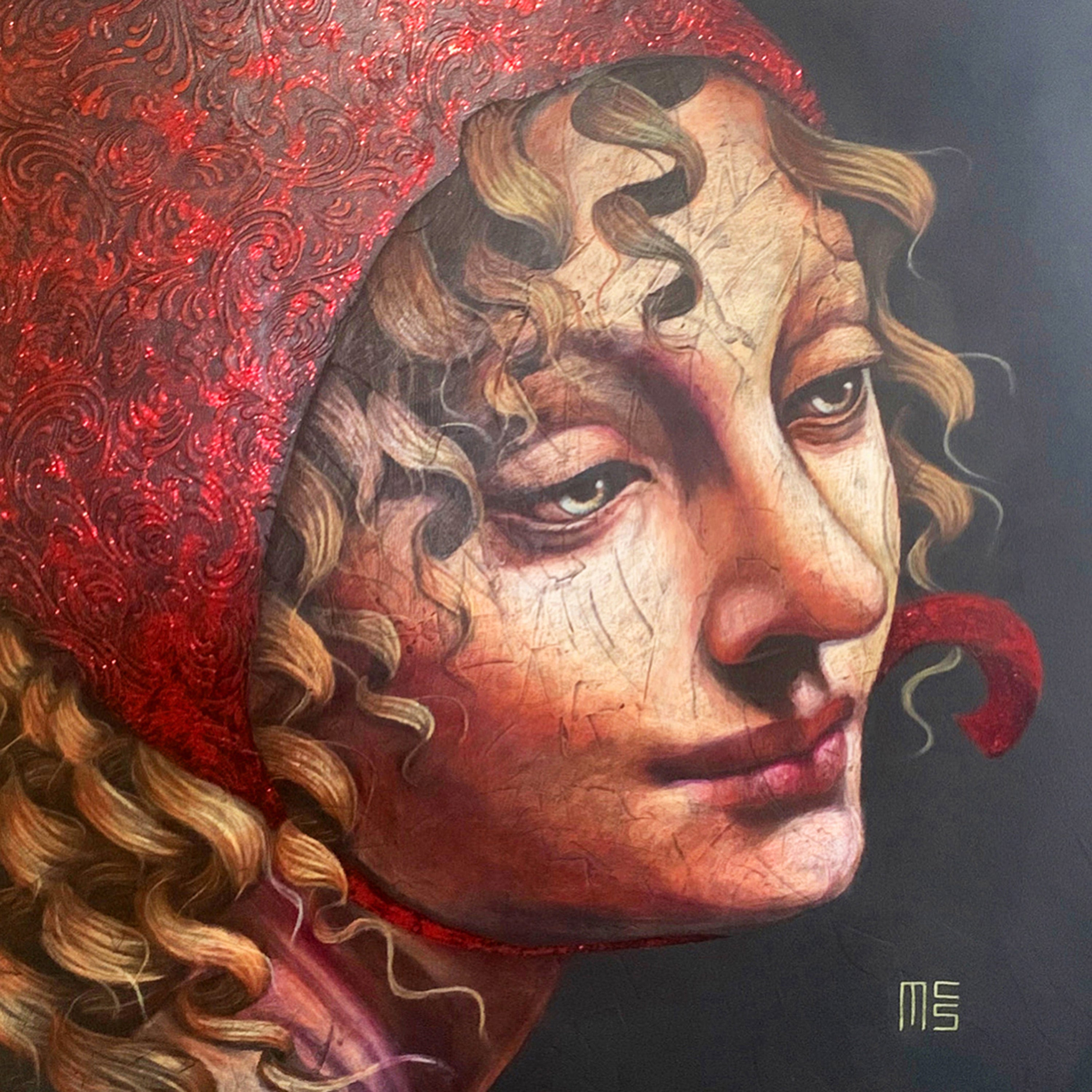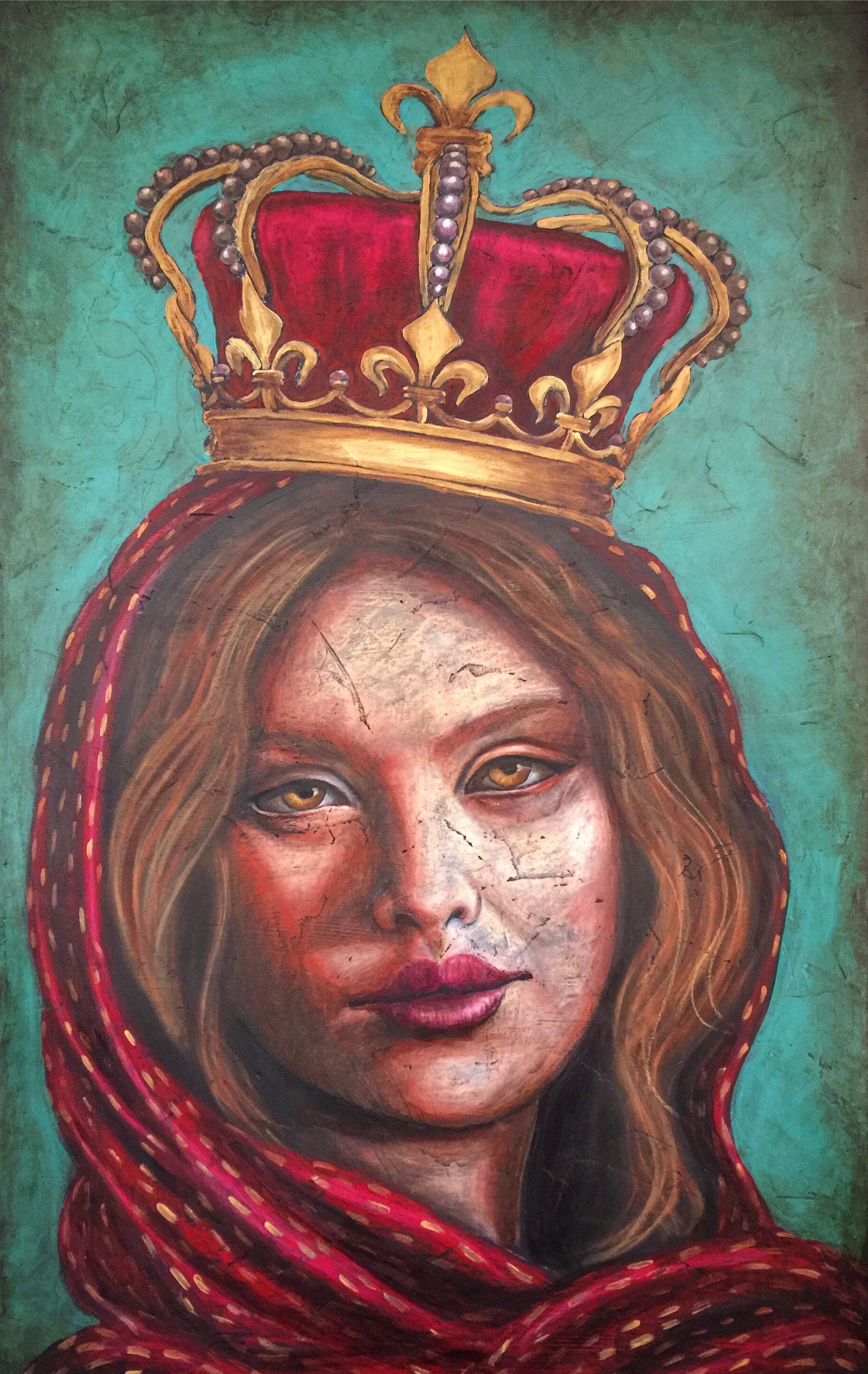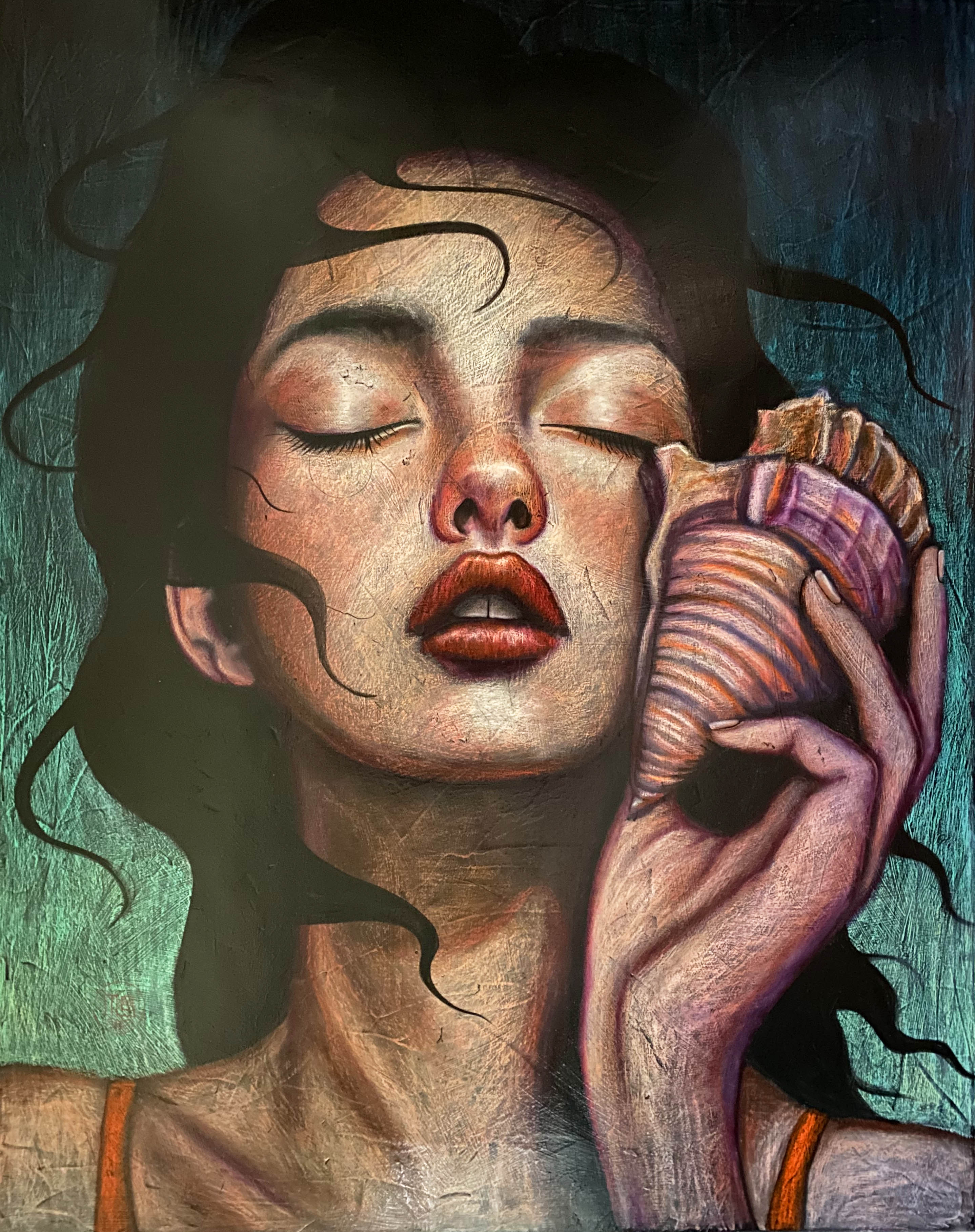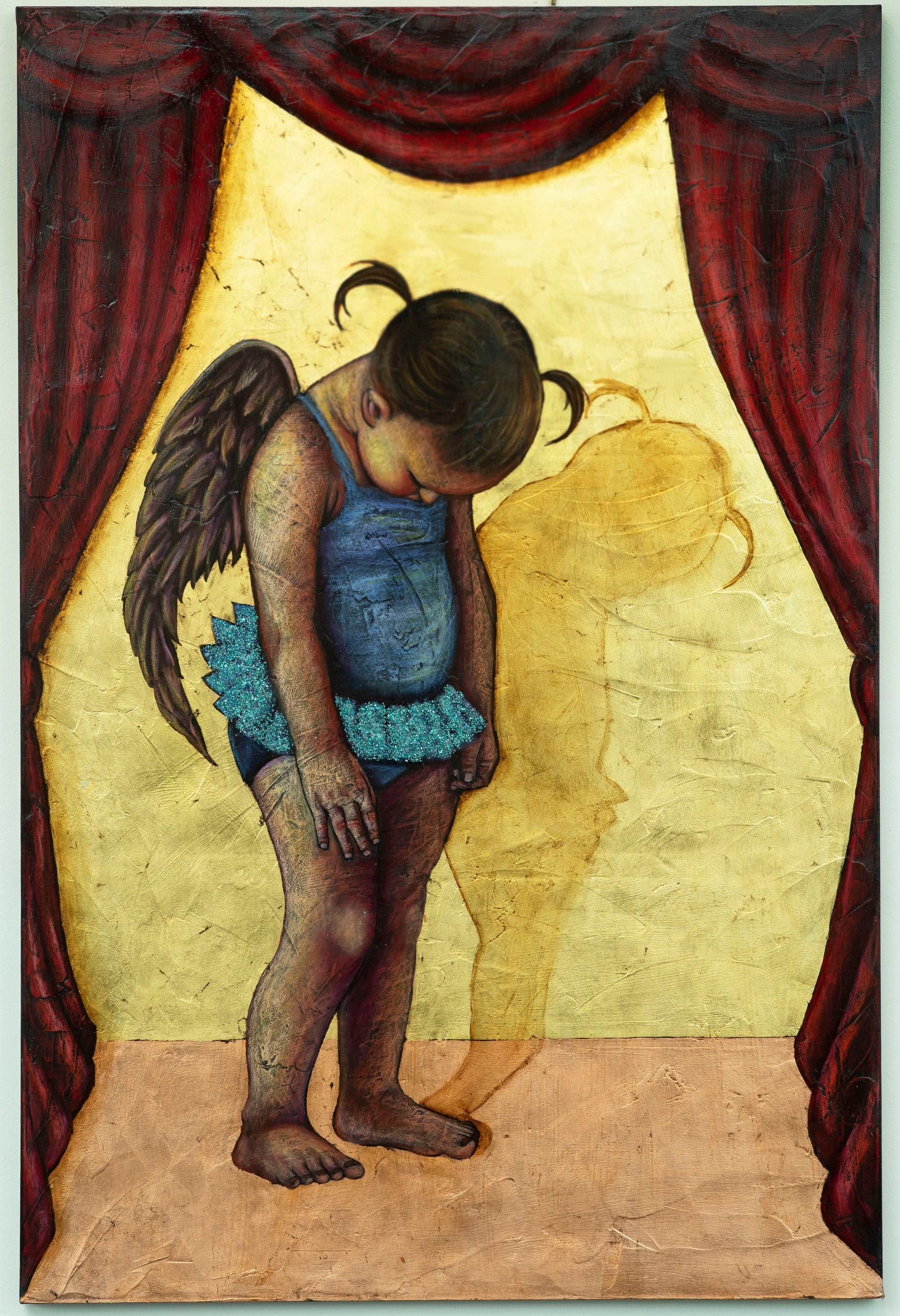Mary Catherine Solberg
-

-
BIO
Mary Catherine Solberg is a contemporary figurative painter based in Minneapolis, MN, whose work bridges the classical and the modern. Inspired by Renaissance masters and religious iconography, she interweaves timeless imagery with pop culture, memory, and personal narrative. Her distinctive process—layering plaster, oil pastels, and mixed media—creates richly textured surfaces that echo the weathered patina of history while infused with the vitality of contemporary life. Solberg’s career includes numerous juried and solo exhibitions, with work featured at the Minnesota Marine Art Museum, the Wausau Museum of Contemporary Art, the Minnesota State Fair, Kickernick Gallery, Keep Contemporary in Santa Fe, Galleri Semmingsen in Oslo, and the Hopkins Center for the Arts. Her paintings are part of private collections worldwide as well as permanent institutional and commercial holdings. In 2025, her painting The Competition was featured on the cover of American Artwork, underscoring her growing presence on the national stage.




Little About Mary
What inspires your work?
My work is less about literal subject matter and more about capturing emotion and transition. By drawing on the epic visual language of the Renaissance and employing classical techniques, I strive to elevate the ordinary into the extraordinary —infusing each piece with depth, history, and meaning.
What is something unexpected about you that often surprises people?
People are often surprised to learn that before becoming a full-time artist, I ran a land surveying business, founded a software company, and even biked solo from Yellowstone to Oregon with no cell phone—just me, the wind, and the open road.
What do you consider your most significant achievement as an artist?
For me, the greatest achievement is when someone resonates with my work on an emotional level. When a painting reaches beyond its surface and deeply connects with a viewer’s own journey, that connection feels more meaningful than any award or recognition.
How has your work evolved over time?
My practice is in constant evolution. I am always experimenting—testing materials, layering textures, and embracing “happy accidents” that lead to discovery. Curiosity keeps the work alive, while my daily commitment to the studio continues to hone both skill and vision.
Is there a particular medium or subject you're drawn to, and why?
I am deeply inspired by the aged beauty of old frescoes, rust, and decay. Cracks, erosion, and layered surfaces feel like visual metaphors for the human condition. Much of my work plays with these themes of impermanence and resilience, weaving them into contemporary imagery.
What's the most challenging part of being an artist?
Focus is both my greatest challenge and my greatest gift. I can be easily distracted, but once I am immersed in painting, I lose myself completely. That state of flow where time disappears and the work becomes a meditation—is part of why I love being an artist.
Do you have a favorite piece you've created? Why does it stand out?
Often my favorite piece is the one I’m currently working on, because the process is so consuming. Still, certain works stand out—Groundhog with Candy Corn, Fallen Angel, and especially L’Appel de la Mer (Call of the Sea), which debuts at Kickernick Gallery. That painting is about silencing the noise of technology, setting down the phone, and reconnecting with the natural and subconscious worlds represented by the ocean.
Where were you born and where did you grow up?
I was born in La Crosse, Wisconsin, in the Driftless Area—a region untouched by glaciers, with dramatic bluffs and valleys. That unique landscape and its enduring geology deeply shaped my sense of place, resilience, and beauty.
Who are your artistic influences or mentors?
I have long admired Leonardo da Vinci and Caravaggio for their mastery of form and light, and Odd Nerdrum for his fearless exploration of the human condition. I’m also inspired by today’s New Contemporary artists who merge classical figurative painting with experimental mixed media.
What advice would you give to emerging artists?
Follow your instincts. Learn techniques, take workshops, and experiment boldly but
don’t be afraid to break rules. The most powerful art comes from authenticity, persistence, and the willingness to keep exploring.






